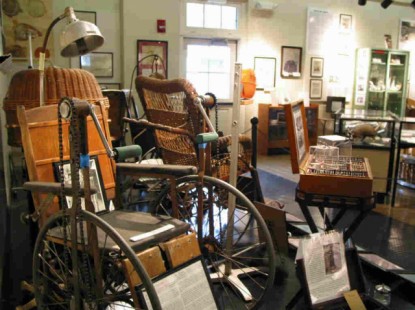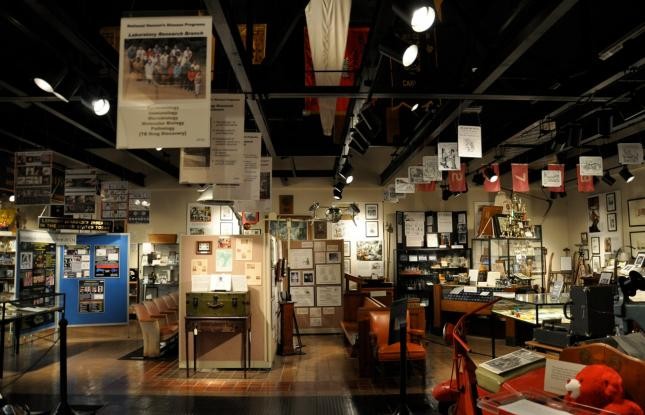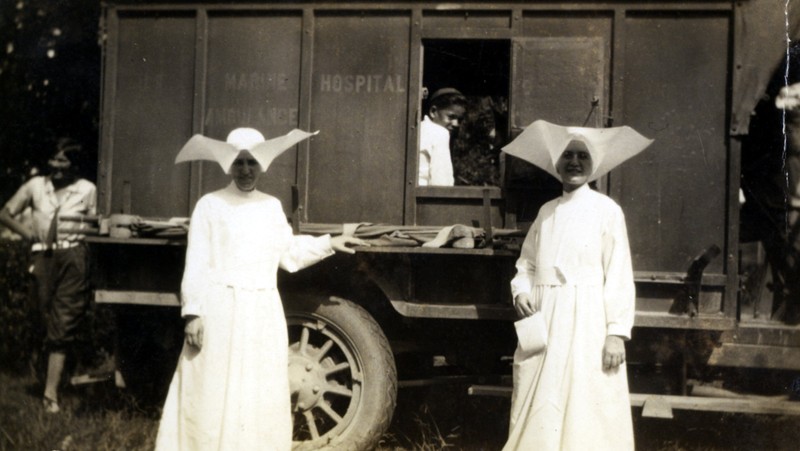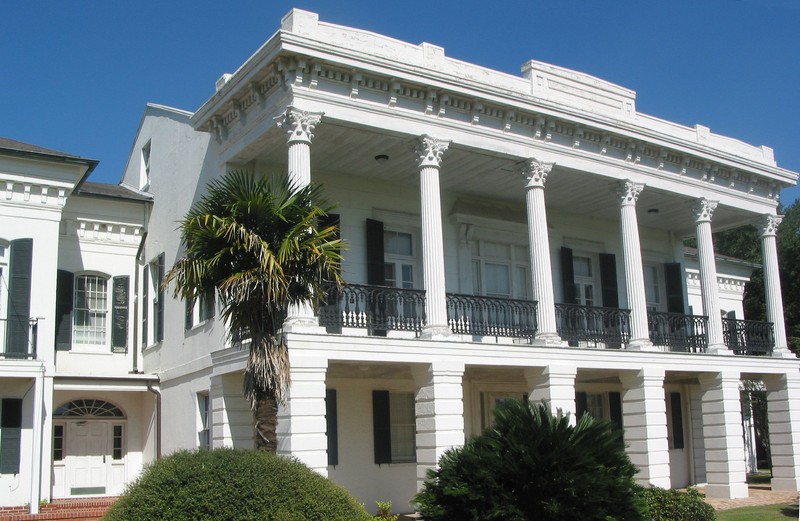National Hansen's Disease Museum (National Leprosarium at Carville)
Introduction
Text-to-speech Audio
Images
Medical artifact display

National Hansen's Disease Museum main exhibit room

The Daughters of Charity, the first nurses at the hospital, arrived to care for the patients in 1896. Here they are pictured with two young patients. Photo 1930s.

Indian Camp Plantation, the 350 acre site that became the National Leprosarium. Used as an administrative building by the federal government.

Backstory and Context
Text-to-speech Audio
Hansen's disease, also known as leprosy, is a disease caused by Mycobacterium leprae. 95% of the world's population is naturally immune to the germ that causes the disease, which affects the skin and nerves. The nerve damage causes insensitivity which can lead to deformity and disability. If unchecked, blindness often occurs.
People who contracted the disease were often shunned by the public for fear that it was highly contagious--it is not. But stigma and shame added to the emotional charge of a diagnosis of leprosy. For that reason, patients waged a campaign to change the name of the disease to Hansen's disease, after the doctor who discovered the germ in 1873.
Hansen's disease became treatable in 1941, when an effective drug therapy was discovered here. It took several decades of perfecting the therapy and for the health laws to change, to allow for patients to be treated outside of hospital confinement. Today, there are still 150-200 new cases of HD diagnosed in the US each year. Patients are treated on an outpatient basis at a clinic close to their home.
Along with exhibits, the museum contains a research archives, available by appointment. Oral histories, photographs, correspondence and memorabilia from patients and personnel tell the story of the nation's only national leprosy hospital, and the breakthrough treatment that brought an end to quarantine
Cite This Entry
Admin, Clio, Felicia Ramirez, and elizabeth schexnyder. "National Hansen's Disease Museum (National Leprosarium at Carville)." Clio: Your Guide to History. July 5, 2018. Accessed February 24, 2025. https://theclio.com/entry/18119
Sources
Hernandez, Barbara Lorraine Michiels, Rasika Vengurlekar, Abhishek Kelkar, and Gincy Thomas. 2009. "THE LEGACY OF CARVILLE: A History of the Last Leprosarium in The U.S." American Journal Of Health Studies 24, no. 2: 314-325.
Academic Search Alumni Edition, EBSCOhost (accessed September 3, 2015).
Lechtreck, Roy. "Exhibition Reviews." Review of "National Hansen's Disease Museum". The Journal of American History 92, no.3 (Dec 2005): pp. 927-929
National Hansen's Disease Museum, archives (accessed July 5, 2018)

